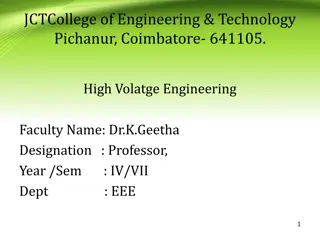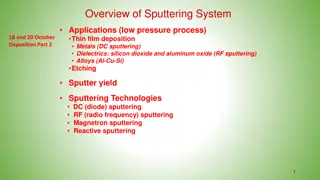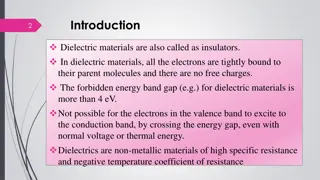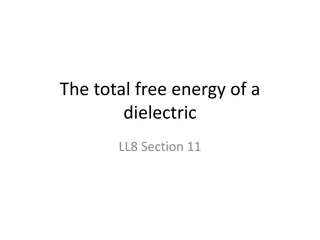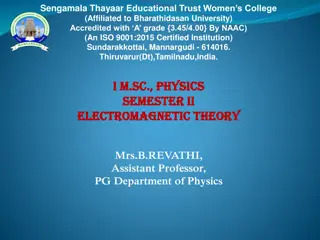Electrical Breakdown in Gases, Solids, and Liquids: Understanding the Phenomenon
Exploring the intricate dynamics of electrical breakdown in various mediums such as gases, solids, and liquids. From the criteria for breakdown in gases to factors affecting breakdown strength in liquid dielectrics, this study delves into the mechanisms, equations, and practical implications of thes
0 views • 15 slides
Understanding Sputtering Systems for Thin Film Deposition
Sputtering systems, including DC and RF sputtering, are used for thin film deposition of metals, dielectrics, and alloys. This process involves ejecting atoms from a solid target material through bombardment by energetic particles. The efficiency of sputtering is measured by sputter yield, which dep
0 views • 35 slides
Understanding Dielectrics and Insulators in Electrical Engineering
Dielectric materials, also known as insulators, have tightly bound electrons with no free charges, characterized by a forbidden energy band gap of over 4 eV. Insulators, on the other hand, prevent electric current flow due to high resistivity and strong covalent bonds. Learn about the differences, d
1 views • 22 slides
Understanding Electric Displacement in Dielectrics and Charge Distributions
Electric displacement in dielectrics involves the interaction of external fields, induced fields, and bound charges, leading to the total electric field. The concept is further explored in contexts like linear dielectrics, dielectric spheres, and charge distributions in solid dielectric rods. Key eq
0 views • 27 slides
Understanding the Electric Field in Dielectrics
Dielectrics play a crucial role in the formation of electric fields, with constant internal fields possible but constant currents impossible. The concept of neutrality in dielectrics and the boundary conditions between different materials are explored, shedding light on polarization and electric ind
0 views • 11 slides
Understanding Thermodynamics of Dielectrics
Exploring the thermodynamics of dielectrics involves analyzing the free energy associated with the electric field interactions in these materials. By considering changes in field and total dipole moment, we can calculate the total free energy density and understand the impact of external factors on
0 views • 12 slides
Understanding Electromagnetic Waves in Physics
Exploring the propagation of electromagnetic waves in different mediums such as free space and isotropic dielectrics. Discusses Maxwell's equations, wave equations, transverse nature, energy transmission, and impedance in electromagnetic wave propagation.
0 views • 24 slides
